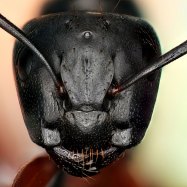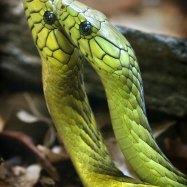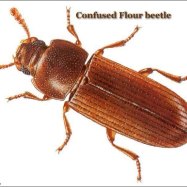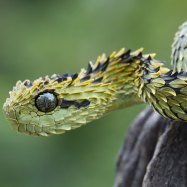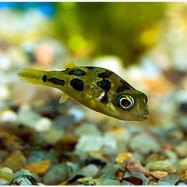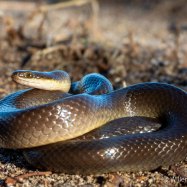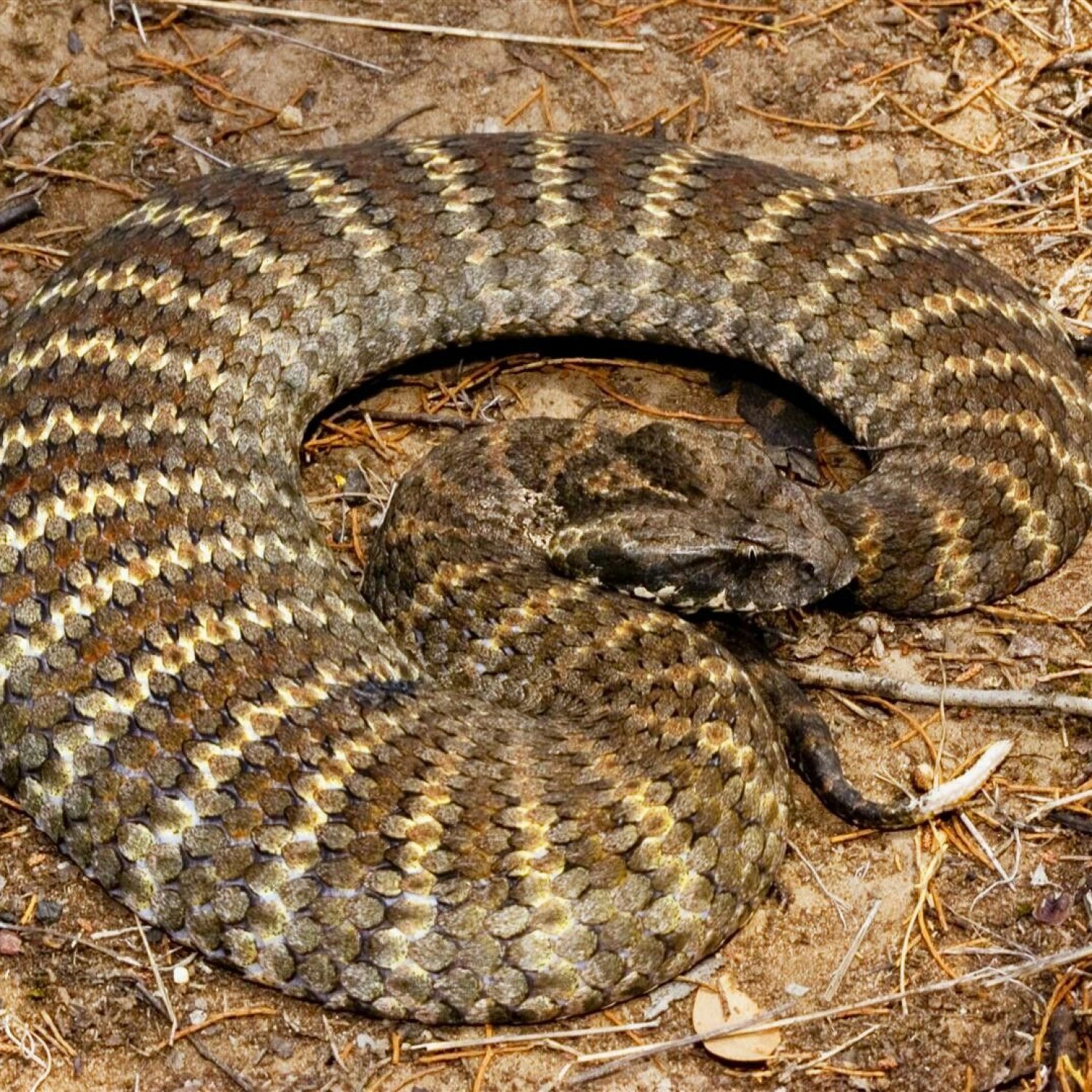
Death Adder
Adults can reach a length of 0.5 to 1.2 meters
The Death Adder is a deadly venomous snake found in Australia. They can grow up to 1.2 meters long and have a short, stout body with a broad triangular head. They are mainly found in northern and eastern parts of Australia and belong to the Elapidae family. Be cautious in their presence and avoid any potentially dangerous encounters.
Animal Details Summary:
Common Name: Death Adder
Kingdom: Animalia
Habitat: Coastal areas, woodlands, grasslands
The Deadly and Mysterious Death Adder
In the vast, rugged landscape of Australia, there are many animals that strike fear into the hearts of both locals and tourists alike. From massive saltwater crocodiles to venomous spiders, this country is known for its deadly creatures. However, one creature stands out among the rest – the Death Adder.Scientifically known as Acanthophis antarcticus, the Death Adder is a venomous snake that belongs to the Elapidae family, commonly referred to as the cobra family Death Adder. This species is native to Australia and New Guinea, and it is known for its lethal venom and unique hunting methods. Although it may seem like a creature straight out of a horror movie, the Death Adder is a fascinating and mysterious animal that deserves to be explored.
The Basics of the Death Adder
To understand the Death Adder, we must first take a closer look at its scientific classification. Like all living organisms, the Death Adder has a kingdom, phylum, class, order, and family. Let's break it down:- Kingdom: Animalia (All animals)
- Phylum: Chordata (Animals with a notochord – a flexible rod that supports the back)
- Class: Reptilia (Reptiles)
- Order: Squamata (Scaled reptiles)
- Family: Elapidae (Cobra family)
The Death Adder shares its kingdom with over one million other animal species, including humans. Within its phylum, it is classified along with other animals with a notochord, such as fish and mammals. It falls under the class of reptiles, which includes snakes, lizards, and turtles. Within the order Squamata, it is classified along with other scaled reptiles, such as pythons and cobras. Finally, the Death Adder belongs to the Elapidae family, which includes other venomous snakes like cobras and mambas Darkling Beetle.
Habitat and Feeding Habits
The Death Adder can be found in a variety of habitats, including coastal areas, woodlands, and grasslands. They are most commonly found in the northern and eastern regions of Australia, where they blend in with the dry, rocky terrain. In terms of their feeding habits, the Death Adder is an ambush predator, meaning it lies in wait for its prey and then strikes with incredible speed and accuracy.Their preferred method of hunting is to bury themselves in the ground or leaf litter, exposing only their head and tail. The Death Adder has a unique lure attached to the tip of its tail that it uses to attract its prey. This lure resembles a small worm, and when curious prey comes too close, the Death Adder strikes with lightning speed, injecting its powerful venom. Their venom is incredibly potent and can kill a human within six hours if left untreated.
Geographical Distribution
As mentioned earlier, the Death Adder can be found in both Australia and New Guinea. In Australia, they are mainly found in the northern and eastern parts of the country. However, they have also been spotted in some southern regions, such as South Australia and Victoria, as well as on nearby islands like Tasmania.In New Guinea, they are distributed throughout the island, inhabiting both rainforests and savannas. This widespread distribution is due to the Death Adder's adaptability to different habitats and environments.
Appearance and Characteristics
Now that we have covered the basic information about the Death Adder let's take a closer look at its appearance and unique characteristics:Animal Coloration
The coloration of the Death Adder varies depending on the species, with three main varieties found in Australia – the Common Death Adder, Northern Death Adder, and Desert Death Adder. The Common Death Adder has a light brown to reddish-brown color, while the Northern Death Adder has a darker, almost black coloration. The Desert Death Adder, as the name suggests, has a lighter coloration to blend in with its sandy environment.
All Death Adder species have darker crossbands, which help them blend in with their surroundings and make them difficult to spot. This allows them to remain hidden while waiting for their prey to come close.
Body Shape and Size
The Death Adder has a short and stout body, with a broad triangular head - a unique feature among venomous snakes. This shape is ideal for their ambush hunting style, allowing them to strike quickly and accurately. Adults can reach a length of 0.5 to 1.2 meters and can weigh anywhere from 0.5 to 1.5 kilograms. This may not seem very big, but their size and shape make them incredibly dangerous.
Reproduction
The Death Adder has a unique reproduction process compared to other snakes. Instead of laying eggs like most reptiles, the female Death Adder gives birth to live young. This process, known as ovoviviparity, allows the eggs to develop and hatch within the mother’s body, and then the babies are born alive. A female Death Adder can give birth to up to 20 babies at a time, but on average, they produce 8-12 young.
The Mysterious Nature of the Death Adder
The Death Adder has long captured the attention of researchers and herpetologists due to its unique characteristics and mysterious behavior. Here are some fascinating facts about this iconic animal:- Quick Strike: The Death Adder can strike in less than 0.15 seconds, making it one of the fastest striking snakes in the world.
- Stubbornness: The Death Adder has a strong feeding instinct, and even after being fed, it will continue to strike at anything that comes near it. This makes them incredibly dangerous, even outside of their natural habitat.
- Unpredictability: Despite their slow movements and seemingly docile nature, Death Adders can be quite unpredictable. They have been known to strike at anything that comes close, including other snakes.
- Vanishing Act: The Death Adder has a unique defense mechanism called the "death-feigning response." When threatened, they will freeze and remain completely still, mimicking a dead snake. This can make it difficult for predators to spot them, and they can quickly escape when the danger has passed.
- Venom Cocktail: While all venomous snakes are dangerous, the Death Adder's venom is especially lethal. It contains a combination of neurotoxins, myotoxins, and coagulants, making it one of the most potent toxins in the world. This venom can quickly cause paralysis, respiratory failure, and death in its prey.
- Longevity: The Death Adder is surprisingly long-lived, with some individuals living up to 15 years in captivity.
The Importance of Conservation
Due to their deadly reputation, the Death Adder is often feared and misunderstood. But like all animals, they play a crucial role in maintaining the balance of their ecosystems. As apex predators, they help control the population of their prey, preventing overgrazing and maintaining the health of their habitats.However, like many other animals, the Death Adder is facing threats to its survival. Habitat loss and fragmentation, disease, and illegal collection for the pet trade are just some of the challenges this species faces. This is why conservation efforts are essential in protecting these misunderstood creatures.
What You Can Do to Help
As humans, we have a responsibility to coexist with the animals in our environment and to protect them for future generations. Here are some ways you can help conserve the Death Adder and other endangered species:
- Educate yourself and others about the importance of wildlife conservation.
- Support organizations that work towards protecting and preserving endangered species and their habitats.
- Reduce your carbon footprint and make environmentally friendly choices to help mitigate the effects of climate change.
- Never buy or sell wild animals, as this encourages illegal collection and can harm the survival of the species.
- Protect their natural habitats by volunteering or donating to habitat restoration programs.
- If you encounter a Death Adder or any other wild animal, keep a safe distance and respect their space. Remember, they are an essential part of our ecosystem, and we must do our best to protect them.
The Endless Fascination with the Death Adder
The Death Adder may seem like a terrifying and dangerous creature, but it is undeniably fascinating. Its unique hunting methods, venom, and mysterious nature make it one of the most intriguing animals in the world. It serves as a reminder of the diversity and wonder of our natural world and the importance of protecting it.Next time you come across a Death Adder, remember that it plays a vital role in its ecosystem and deserves our respect and protection. And who knows, maybe this misunderstood serpent will continue to captivate our curiosity for decades to come.

Death Adder
Animal Details Death Adder - Scientific Name: Acanthophis antarcticus
- Category: Animals D
- Scientific Name: Acanthophis antarcticus
- Common Name: Death Adder
- Kingdom: Animalia
- Phylum: Chordata
- Class: Reptilia
- Order: Squamata
- Family: Elapidae
- Habitat: Coastal areas, woodlands, grasslands
- Feeding Method: Ambush predator
- Geographical Distribution: Australia, New Guinea
- Country of Origin: Australia
- Location: Mainly found in northern and eastern parts of Australia
- Animal Coloration: Varies depending on the species, ranging from light brown to reddish-brown, with darker crossbands
- Body Shape: Short and stout, with a broad triangular head
- Length: Adults can reach a length of 0.5 to 1.2 meters
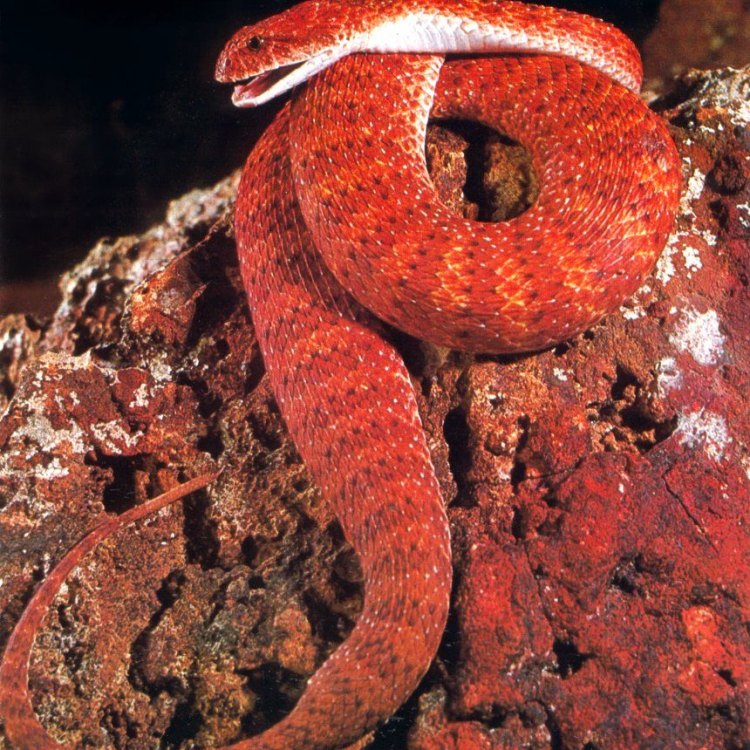
Death Adder
- Adult Size: Adults typically grow to be 1 meter long
- Average Lifespan: Around 10 to 15 years
- Reproduction: Oviparous (egg-laying)
- Reproductive Behavior: Males engage in combat during mating season
- Sound or Call: No known sounds or calls
- Migration Pattern: No known migration pattern
- Social Groups: Solitary
- Behavior: Nocturnal, sedentary except during the mating season
- Threats: Habitat loss, snakebite envenomation, invasive species
- Conservation Status: Least Concern
- Impact on Ecosystem: Plays a role in controlling rodent populations
- Human Use: Not commonly used by humans
- Distinctive Features: Triangular-shaped head, venomous fangs
- Interesting Facts: 1. Death adders have the quickest strike of any known snake species, capable of striking and envenomating prey in less than 0.15 seconds. 2. They are highly venomous and their venom contains neurotoxins that can cause paralysis and death. 3. Death adders are known for their camouflage abilities, often blending in with their surroundings to ambush unsuspecting prey. 4. The species has been named 'Death Adder' because of its potent venom and deadly reputation. 5. Despite their name and deadly reputation, death adders tend to be shy and will usually only bite if provoked or threatened.
- Predator: Few predators due to its venomous nature

Acanthophis antarcticus
The Deadly Death Adder: Australia's Most Venomous Snake
When you think of deadly snakes, the first images that come to mind are probably of cobras, rattlesnakes, or pythons. However, there is one snake that often flies under the radar, yet possesses one of the quickest strikes and deadliest venoms in the world – the death adder.Found in Australia and parts of Papua New Guinea, the death adder (Acanthopis antarcticus) is a highly venomous snake known for its deadly reputation and distinctive features. In this article, we'll take a closer look at this fascinating species and learn more about its unique characteristics, behavior, and role in the ecosystem PeaceOfAnimals.Com.
## Adult Size and Lifespan
On average, death adders can grow up to 1 meter long, with females typically being larger than males. This makes them a relatively small species compared to other venomous snakes, such as the eastern diamondback rattlesnake that can reach over 2 meters in length.
In terms of lifespan, death adders can live up to 10 to 15 years in the wild, depending on various factors like prey availability, habitat conditions, and human activities. They are a relatively long-lived species for a snake, with some individuals reported to have lived up to 20 years in captivity.
## Reproduction and Courtship Behavior
Death adders reproduce through a process known as oviparity, meaning they lay eggs rather than give live birth. Female death adders can lay up to 30 eggs at a time, which they will incubate for around 2 to 3 months before hatching.
During the mating season, which can vary depending on the region, male death adders engage in combat to compete for female attention. This involves a series of wrestling matches, with the winning male getting the opportunity to mate with the female.
## Sound or Call: Silent but Deadly
One interesting fact about death adders is that they do not make any sounds or calls Dinosaurs. Unlike many other snakes that hiss, rattle, or use other vocalizations as a warning signal, death adders rely solely on their potent venom to protect themselves.
This silent nature also helps them to remain well-hidden from potential predators and prey, making them even more dangerous.
## Migration Pattern and Social Groups
Death adders are solitary creatures, meaning they do not form social groups or travel in packs. They are primarily sedentary, staying in one location for long periods, except during the mating season when they will move around to find a mate.
There is no known migration pattern for death adders, although they may move to find better hunting or nesting locations or to escape unfavorable conditions like drought or bushfires.
## Behavior: Nocturnal and Sedentary, Except During Mating Season
Death adders are primarily nocturnal, meaning they are most active at night. This is when they hunt for prey, using their excellent camouflage and ambush techniques to catch their victims.
During the day, death adders will typically stay hidden in a burrow or under leaf litter, relying on their camouflage abilities to blend in with their surroundings and avoid detection.
Another important behavior of the death adder is its sedentary nature, except during the breeding season. This means they tend to stay in one location for extended periods, only venturing out to hunt or mate.
## Threats to Survival: Habitat Loss and Snakebite Envenomation
Like many other species, the death adder is facing multiple threats to its survival. One of the primary concerns is habitat loss, as more and more of their natural habitat is being destroyed or degraded due to human activities such as urbanization and deforestation.
Another significant threat to the death adder is snakebite envenomation, both to humans and other animals. The death adder's venom is highly potent and contains neurotoxins that can cause paralysis and even death. This makes them a major concern for people who live in areas where they are found and for anyone who may come into contact with them while out in the wilderness.
## Conservation Status: Least Concern, Despite Threats
Despite the various threats to their survival, the death adder is currently listed as a species of Least Concern on the International Union for Conservation of Nature (IUCN) Red List. This means that, based on current population levels and trends, the species is not at immediate risk of extinction.
However, this does not mean that we should be complacent about their conservation. As human activities continue to impact their habitat and increase the risk of snakebites, it is essential to monitor and protect this species to ensure their survival in the wild.
## Impact on Ecosystem: Controlling Rodent Populations
Like other predators, death adders play a crucial role in maintaining a healthy ecosystem. As ambush hunters, they primarily feed on rodents, which helps in controlling their population. This, in turn, can have a cascading effect on other species that may depend on rodents as a food source, ultimately affecting the balance of the ecosystem.
Without death adders as part of the ecosystem, there could be a surge in rodent populations, leading to competition for resources and potential disruptions in the food chain.
## Human Use: Not Commonly Used by Humans
One interesting fact about death adders is that they are not commonly used by humans. Unlike other snake species that are often bred in captivity for their venom or as pets, death adders are generally left alone in the wild.
However, their venom is being studied for potential medical applications, such as in developing antivenoms or even new treatments for certain medical conditions.
## Distinctive Features: Triangular-shaped Head and Venomous Fangs
One look at a death adder, and it is clear why they are named as such. Their triangular-shaped head, also known as a "death head," is a distinctive feature of this species. This head shape allows them to open their mouths extra wide and deliver a venomous bite to their prey.
Their venomous fangs are another key characteristic of the death adder. These fangs are relatively short compared to other venomous snakes but are highly effective at injecting venom quickly into their prey.
## Interesting Facts About Death Adders
1. Death adders have the quickest strike of any known snake species, capable of striking and envenomating prey in less than 0.15 seconds.
2. They are highly venomous, and their venom contains neurotoxins that can cause paralysis and death.
3. Death adders are known for their camouflage abilities, often blending in with their surroundings to ambush unsuspecting prey.
4. The species has been named 'Death Adder' because of its potent venom and deadly reputation.
5. Despite their name and deadly reputation, death adders tend to be shy and will usually only bite if provoked or threatened.
## Few Predators Due to Venomous Nature
Because of their highly venomous nature, death adders have few predators in the wild. However, larger snakes, such as the king brown snake, are known to prey on death adders. Birds of prey, such as kookaburras and brown falcons, have also been observed catching and eating death adders.
## Conclusion
The death adder may not be as well-known as other highly venomous snakes, but it certainly deserves attention for its unique characteristics and deadly reputation. With its quick strike, potent venom, and excellent camouflage abilities, this species has rightfully earned its place as one of Australia's most fascinating and feared creatures.
However, despite its intimidating name and venomous nature, the death adder is a crucial part of the ecosystem, playing a role in controlling rodent populations. As with any species, it is essential to respect and protect the death adder and other wildlife to ensure their survival for generations to come. So, next time you come across a death adder, remember to admire it from a safe distance and appreciate its ability to thrive in its natural habitat.
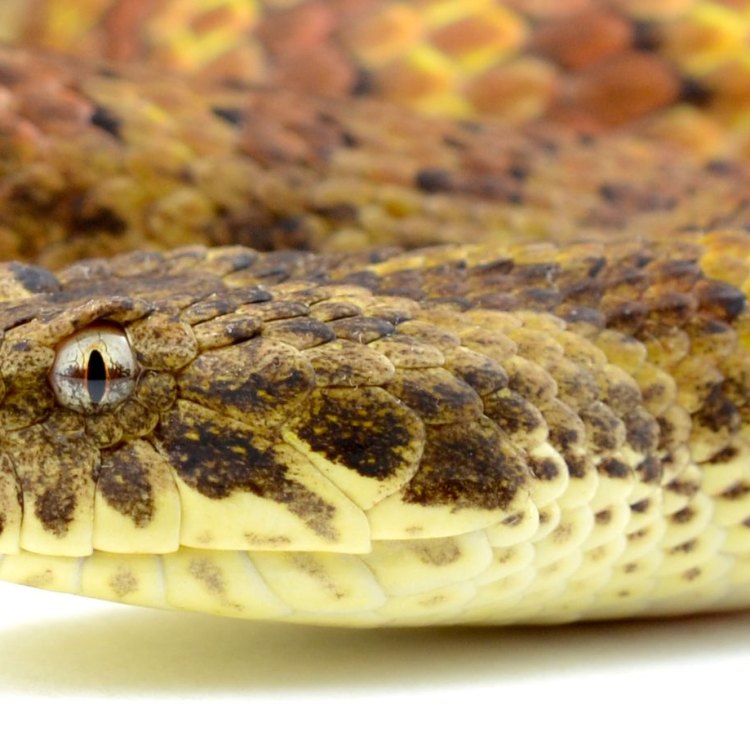
The Deadly and Mysterious Death Adder
Disclaimer: The content provided is for informational purposes only. We cannot guarantee the accuracy of the information on this page 100%. All information provided here may change without prior notice.


